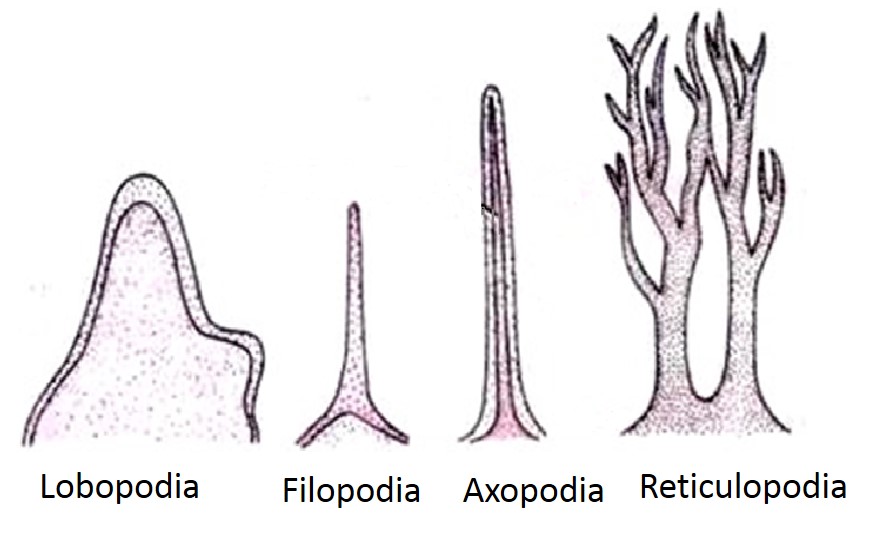Kingdom Protista - Locomotion
Description:
Protists show the following five modes of locomotion −
Pseudopodial Locomotion
Slow creeping like locomotion performed with the help of protoplasmic outgrowths called pseudopodia.
Types of pseudopodia −
Lobopodia − Lobe like with broad and blunt ends present in Amoeba.
Filopodia − Fine thread like, tapering and are composed of ectoplasm mostly found in Euglypha.
Axopodia − Long and stiff with hard axial filament mostly found in Actinophrys.
Reticulopodia − Long and branching commonly found in Globigerina.

Flagellar Locomotion
- Flagella show whip-like movement.
- They beat independently.
- Occurs in Dinoflagellates.
Ciliary Locomotion
Cilia shows movement.
All cilia of a cell show coordinated movement. This can be of two types −
Isochronic − All cilia of cell beat simultaneously.
Metachronic − All cilia beat in rapid succession one after the other.
Wriggling Locomotion
- Slow worm like movement.
- Performed with the help of wave of contraction and expansion in the body.
- Common type of locomotion in Sporozoans.
Locomotion by Mucilage Propulsion
- Some organisms like Diatoms do not have any organ for locomotion.
- They move from one place to another by secretion of mucilage.
- This type of motion occurs in the direction opposite to that of mucilage secretion.

